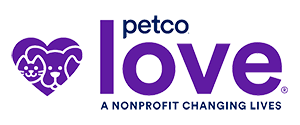FAQs
What is your mission?
Dog Is My CoPilot transports at risk animals from overcrowded shelters to adoption centers in other geographic regions where loving families are waiting to adopt the animals.
What is your vision?
We reduce animal euthanasia in overcrowded shelters by ensuring that each pet has the chance to find a safe and loving home.
When did the organization begin?
Peter E. Rork, MD, an orthopedic surgeon and lifelong pilot, and Judy Zimet, Esq., a lawyer in Arizona, founded the organization in 2012, with the goal of saving as many animals’ lives as possible.
How are you making an impact?
In the US, over 1 million animals are euthanized every year in shelters which has increased the demand for transportation services. To help reduce euthanasia rates of dogs and cats in shelters, we purchased a second airplane in 2022 to increase our life saving capacity.
We transport animals from shelters in California, New Mexico, Oklahoma and Texas where adoptable pets are at the highest risk for euthansia and fly them to adoption partners where each one has the opportunity to find a loving forever home.
How much do you charge?
We are a 501c(3) non-profit that provides our services at no cost to the shelters and adoption centers we partner with. We rely on donations to fuel our rescue flights.
Can I pay you to transport my pet?
No. We are not a “for-hire” organization. Our mission is to reduce euthanasia rates by transporting animals from places with overcrowded shelters to adoption centers in other geographic regions where loving families are waiting to adopt them.
Who are your partners?
We work collaboratively with city shelters, local animal welfare organization and individuals to save the lives of pets abandoned in animal shelters. To learn more about becoming a partner click here.
Who is your pilot?
Dr. Peter Rork our founder and chief Pilot is an orthopedic surgeon who donates ALL of his time piloting DIMC rescue flights. He started flying lessons when he was twelve, recieved his Pilot’s license when he was sixteen and took his first solo on May 15, 1969 in New Jersey, where he grew up. After his wife passed away in 2012, he teamed up with Judy Zimet, a Scottsdale real estate attorney and animal lover, to start Dog Is My CoPilot.
In 2022, our volunteer pilot team has grown and we have nine pilots helping to fly our rescue missions!
Where do you fly?
With the support of Petco Love and other foundations, we have been increasing the number of rescue flights where long distance ground transportation is challenging and stressful for the animals. In June 2022, we purchased a second aircraft to increase our life saving capacity. The new plane allows us to expand our partner network and double the number of lives that we save each year!
What type of aircraft do you fly?
Dog Is My CoPilot owns two Cessna 208B Grand Caravans, called ‘The Big Dog’ and ‘The Sequel’. Pilot Peter says, “with a 675HP turbine engine up front, there is more than enough power to fly abondoned dogs and cats to their new homes!
How many animals can you transport on one flight?
Our aircrafts have been retrofitted from 12-passenger planes to ones that can carry up upwards of 150 animals dependent on animal and crate size. An average flight has a 75 dogs and cats on board.
Is it safe for animals to fly?
Each animal that is transported is required to have a health certificate, vaccinations and have been examined by a veterinarian prior to flight. All passengers travel in crates to ensure their safety while flying.
What type of animals do you fly?
DIMC’s passengers are predominantly dogs (80 percent versus 20 percent cats) who come from about 20 source shelters. Despite being called kill shelters, these open-admission shelters, often in crowded municipal areas, have staff that want the best outcome for the animals in their care — animals that may have been dumped at the shelter or born on the streets and removed for public health and safety reasons. DIMC makes working at those shelters a little more hopeful.
How many animals have you saved?
We have flown more than 23,000 animals to safety.





